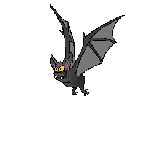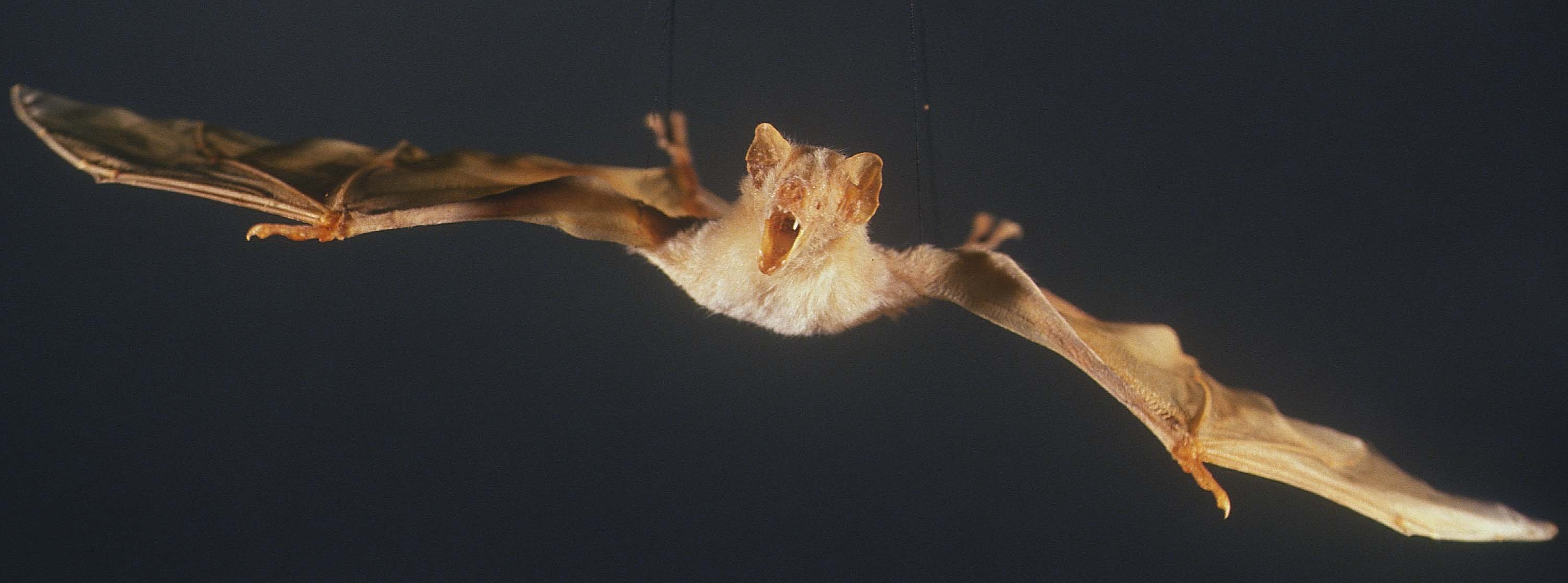

|
 |
INTRODUCTION TO THE BATS

Bats are creatures of mystery, emerging only at the dead of night
in search of their next meal. But, despite what many people think, they are not all evil blood-suckers.
In fact the vast majority of bats are extremely helpful to humans. They pollinate
plants, disperse seeds, and feed on insect pests such as mosquitos. So if you think
these elusive creatures deserve a little more respect, then read on...
|
Bats are so unique that they have been placed in their own order, the order Chiroptera,
meaning "hand-wing". As the name implies, their thumb and four separate fingers are webbed
with skin, forming the ribs of the wing. But what makes them unique among mammals is the
fact that they can fly. They are the only flying mammal. |
|

An insect-eating microbat from the museum
|
Bats are amazingly widespread, the approximately 925 species of
living bats making up nearly a quarter of all known living mammal species 1.
The order is broken down into two sub-orders; Megachiroptera, (the big bats, or megabats),
and Microchiroptera, (the little bats or microbats). All the insect-eating bats are
microbats, while the Old World megabats eat mainly fruit, giving them the common name
fruitbats.
But the elusive reputation of bats stretches far beyond myth and legend and into the world of
modern science. For the last twenty years, the origin and evolution
of Chiroptera has been
one of the most controversial topics in mammalian systematics. It is not yet agreed when bats arose
relative to other mammals, or even whether megabats and microbats belong to
the same order at all. Click here to view a cladogram showing the probable position of bats
within the history of mammals.
Cited references and Photo Credits
|










